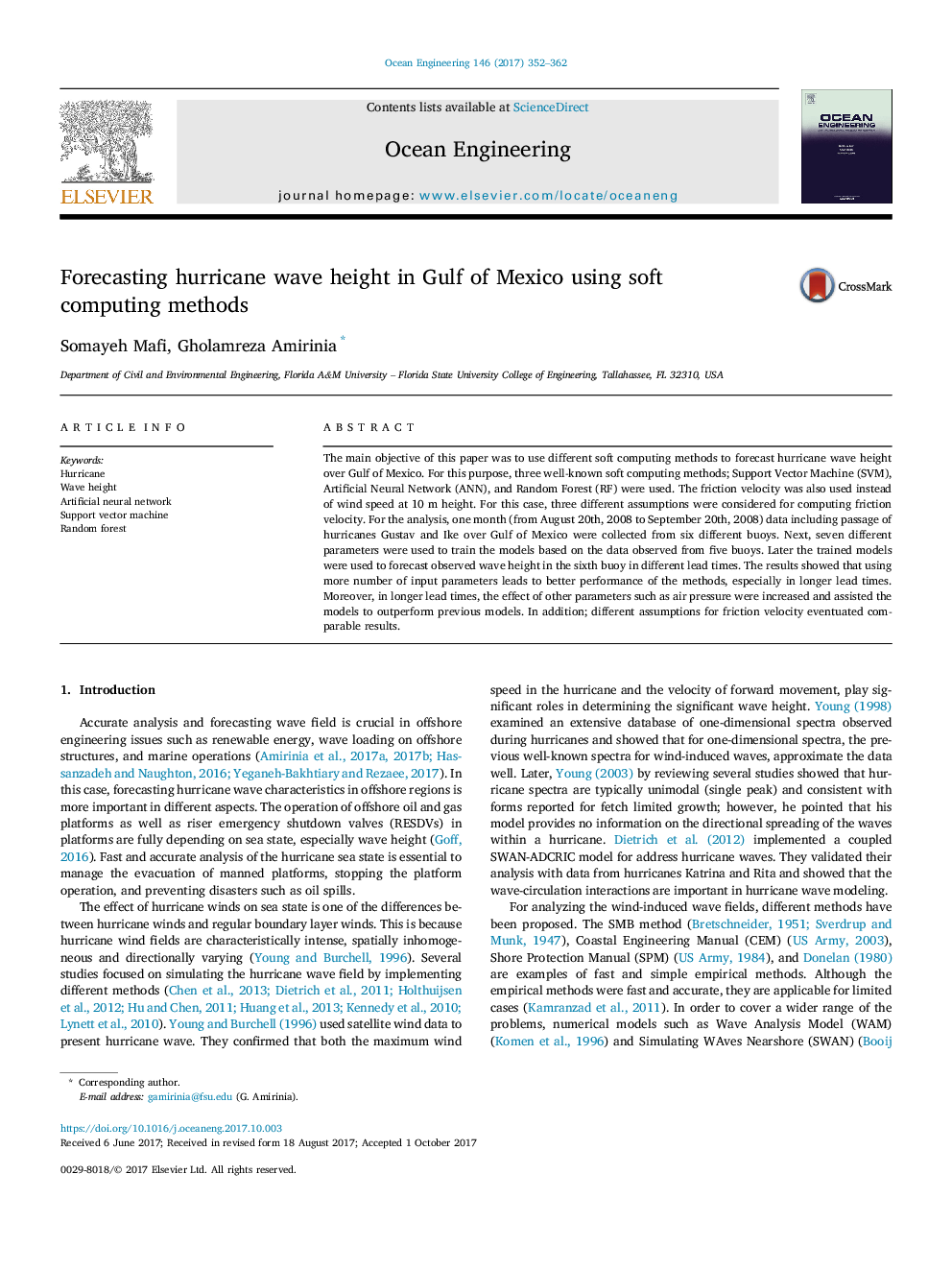| Article ID | Journal | Published Year | Pages | File Type |
|---|---|---|---|---|
| 5474075 | Ocean Engineering | 2017 | 11 Pages |
Abstract
The main objective of this paper was to use different soft computing methods to forecast hurricane wave height over Gulf of Mexico. For this purpose, three well-known soft computing methods; Support Vector Machine (SVM), Artificial Neural Network (ANN), and Random Forest (RF) were used. The friction velocity was also used instead of wind speed at 10Â m height. For this case, three different assumptions were considered for computing friction velocity. For the analysis, one month (from August 20th, 2008 to September 20th, 2008) data including passage of hurricanes Gustav and Ike over Gulf of Mexico were collected from six different buoys. Next, seven different parameters were used to train the models based on the data observed from five buoys. Later the trained models were used to forecast observed wave height in the sixth buoy in different lead times. The results showed that using more number of input parameters leads to better performance of the methods, especially in longer lead times. Moreover, in longer lead times, the effect of other parameters such as air pressure were increased and assisted the models to outperform previous models. In addition; different assumptions for friction velocity eventuated comparable results.
Related Topics
Physical Sciences and Engineering
Engineering
Ocean Engineering
Authors
Somayeh Mafi, Gholamreza Amirinia,
